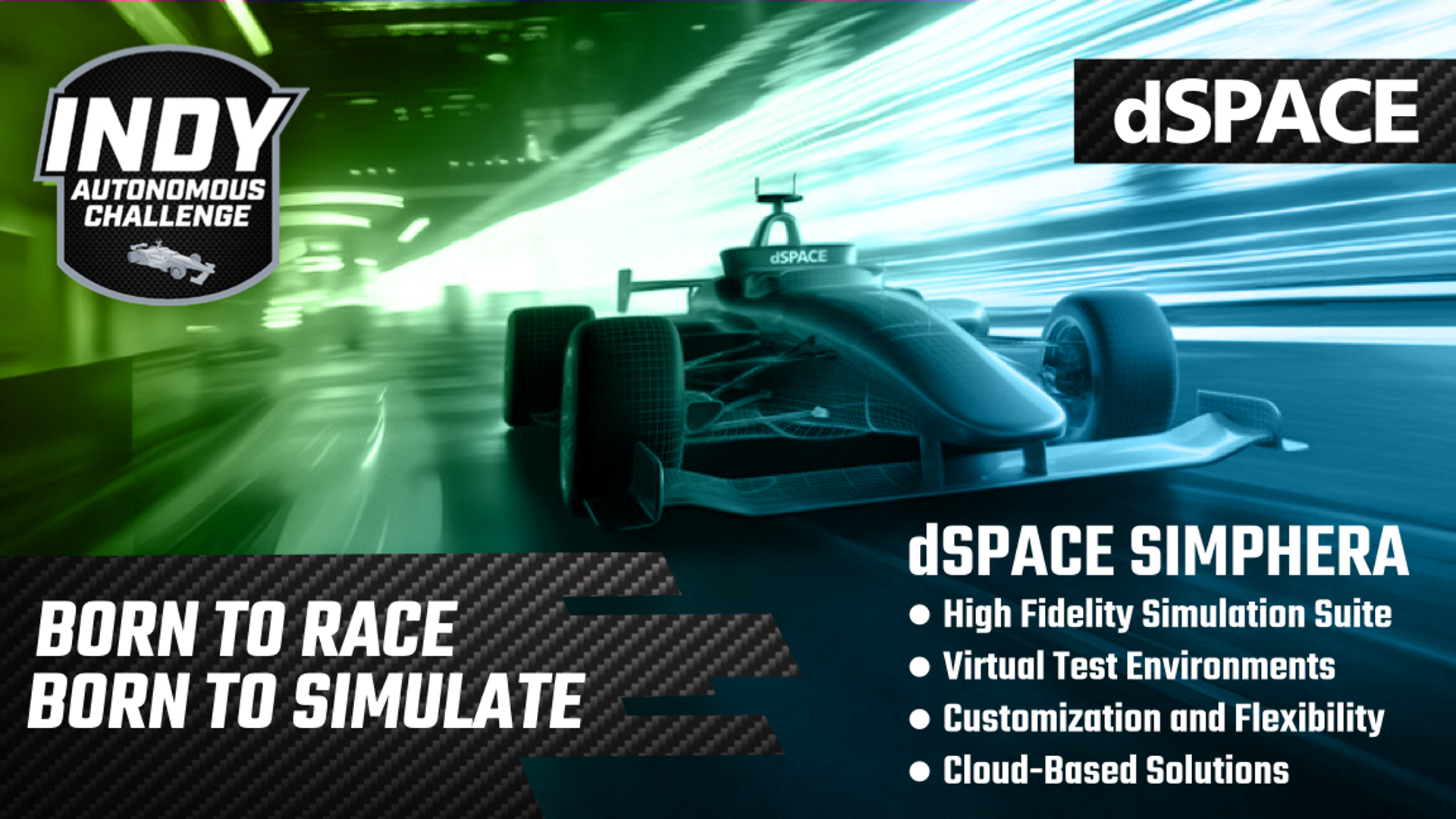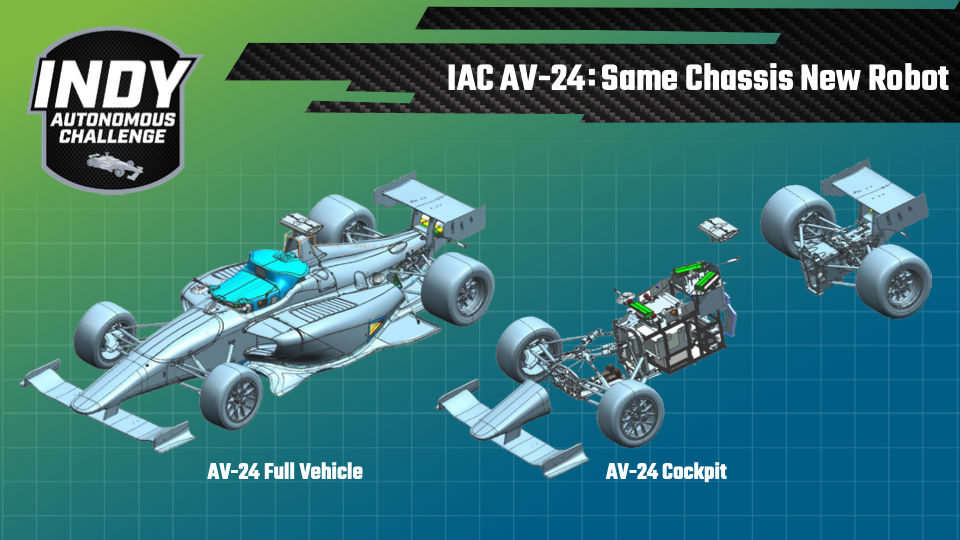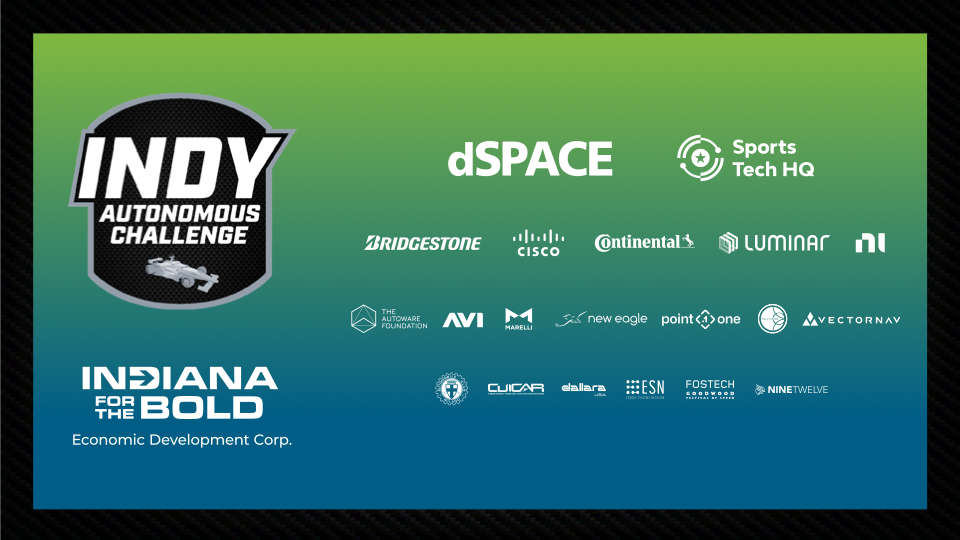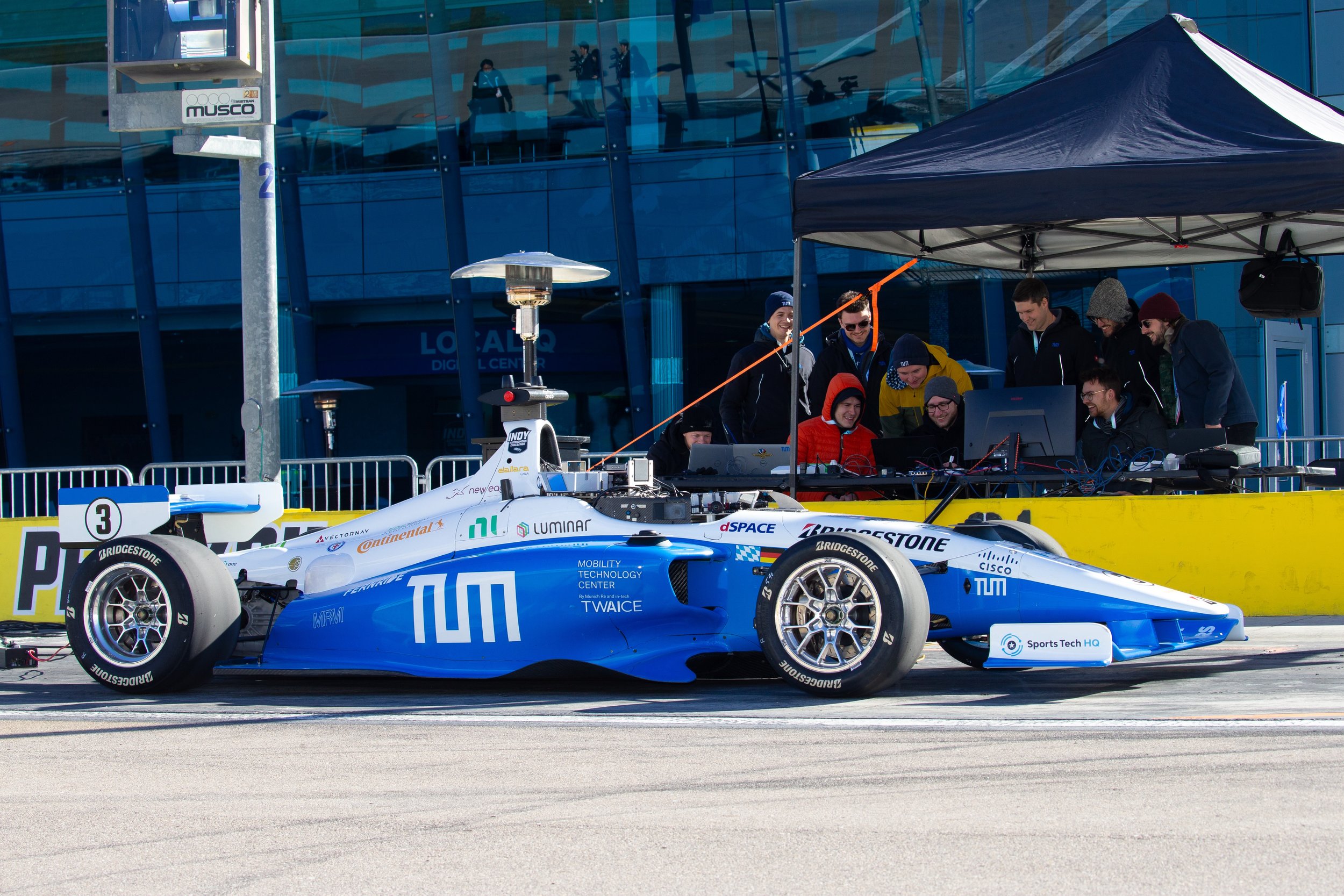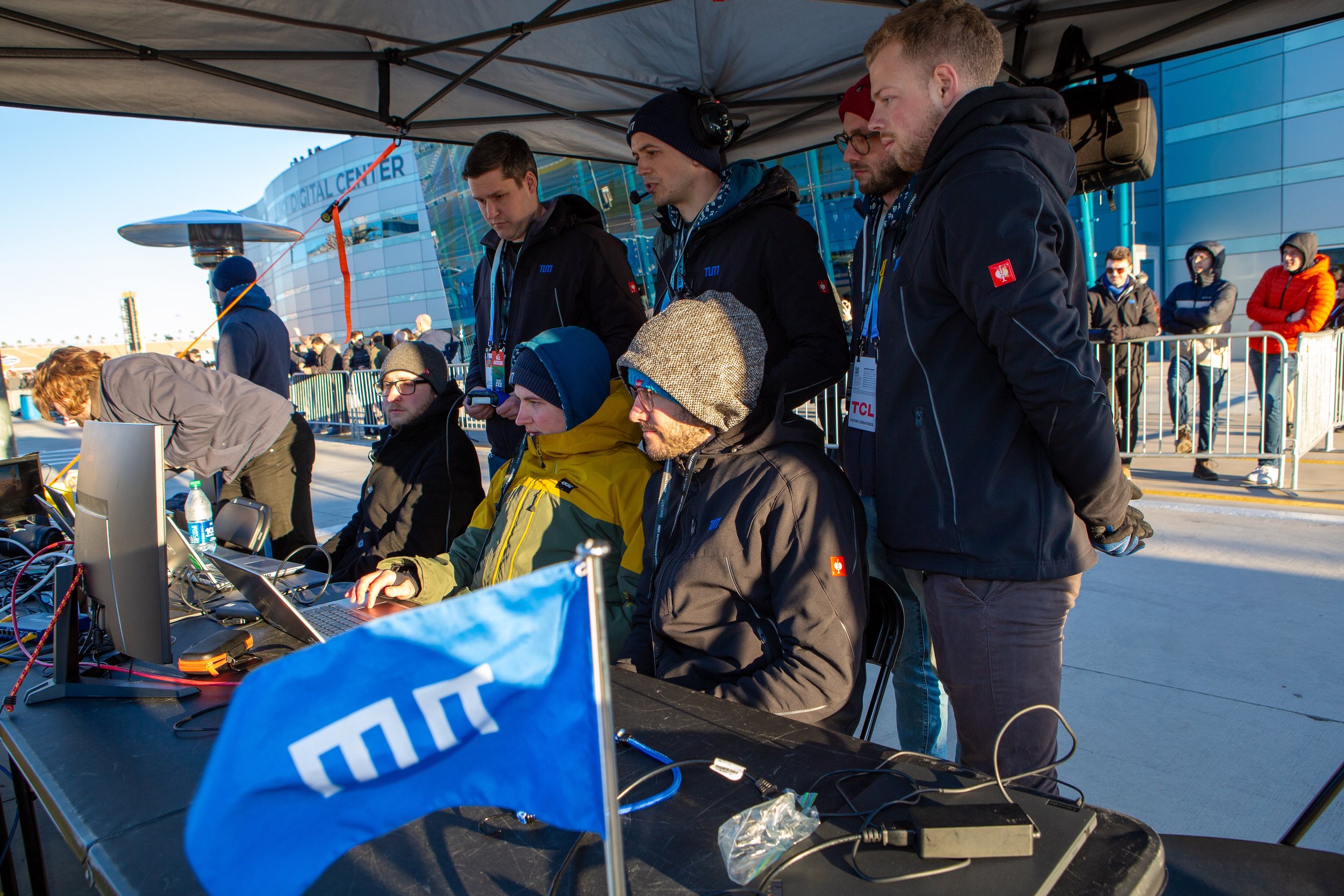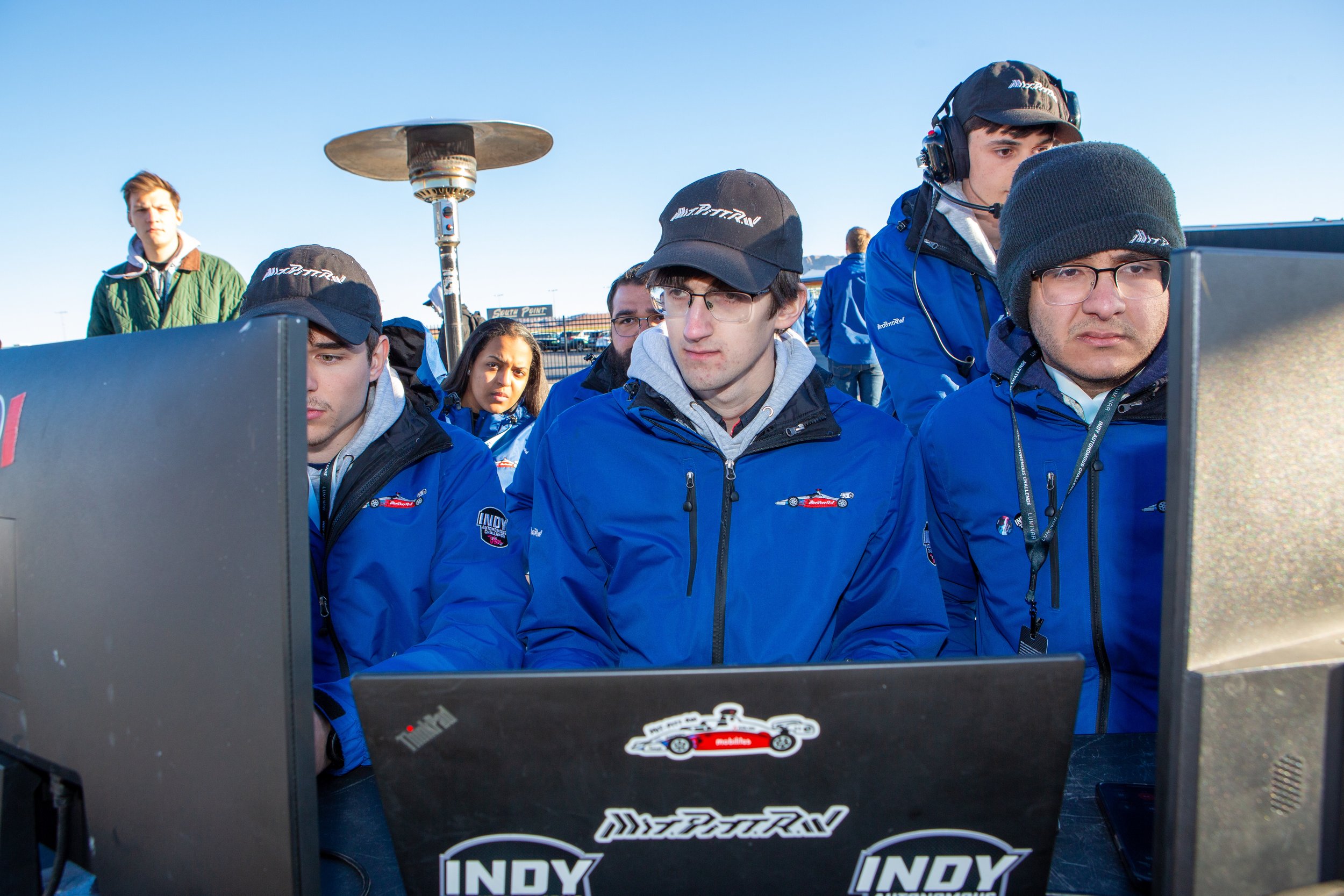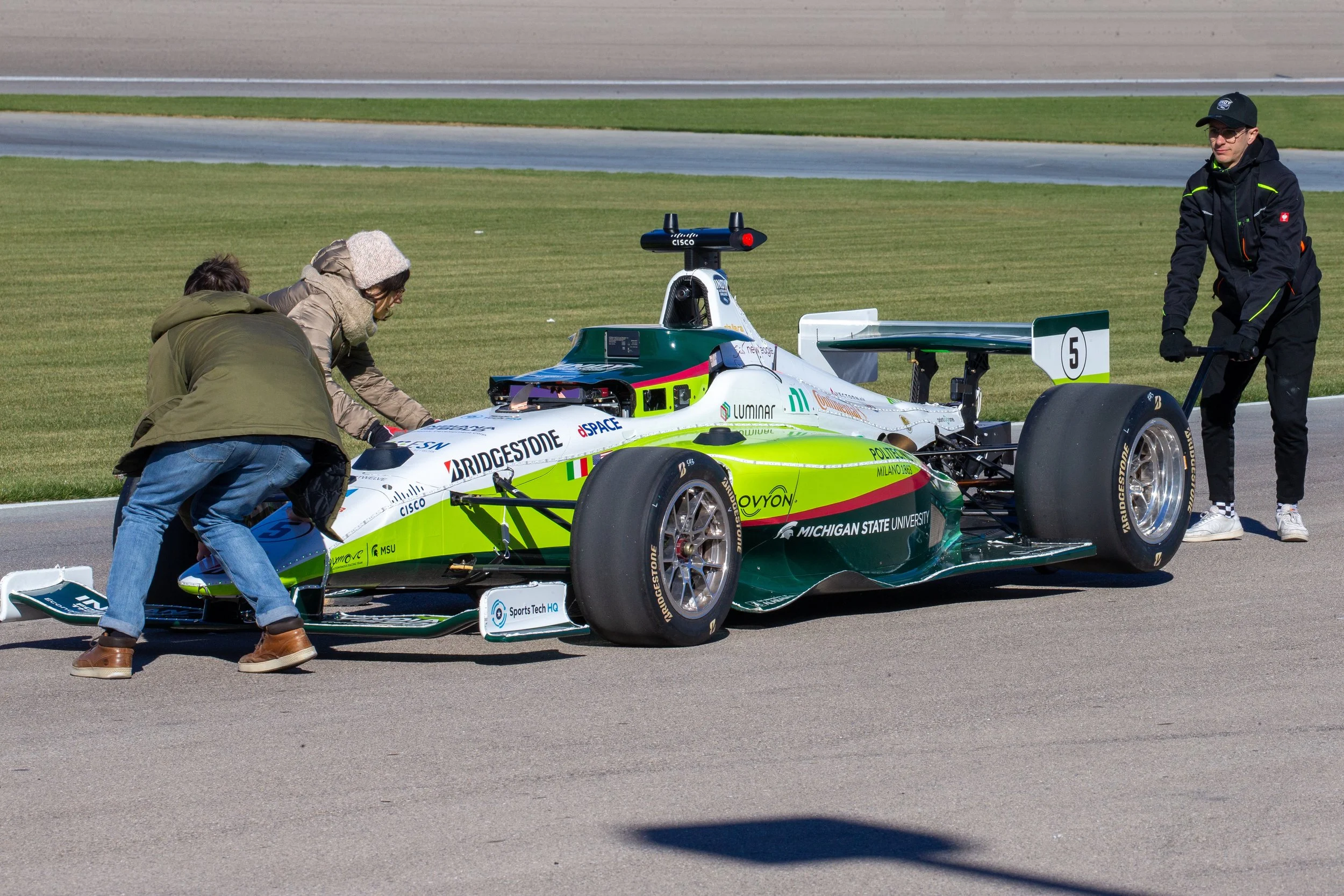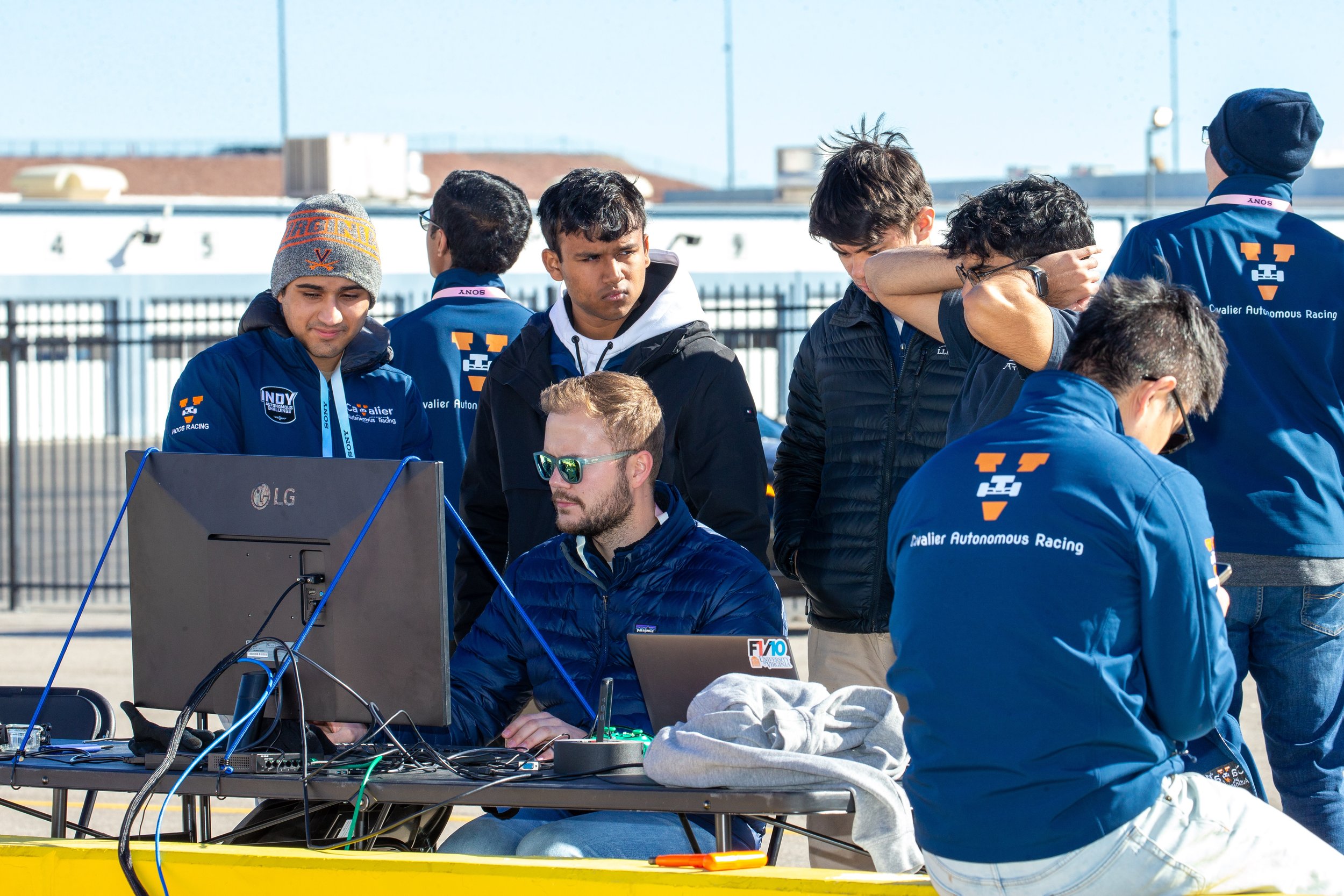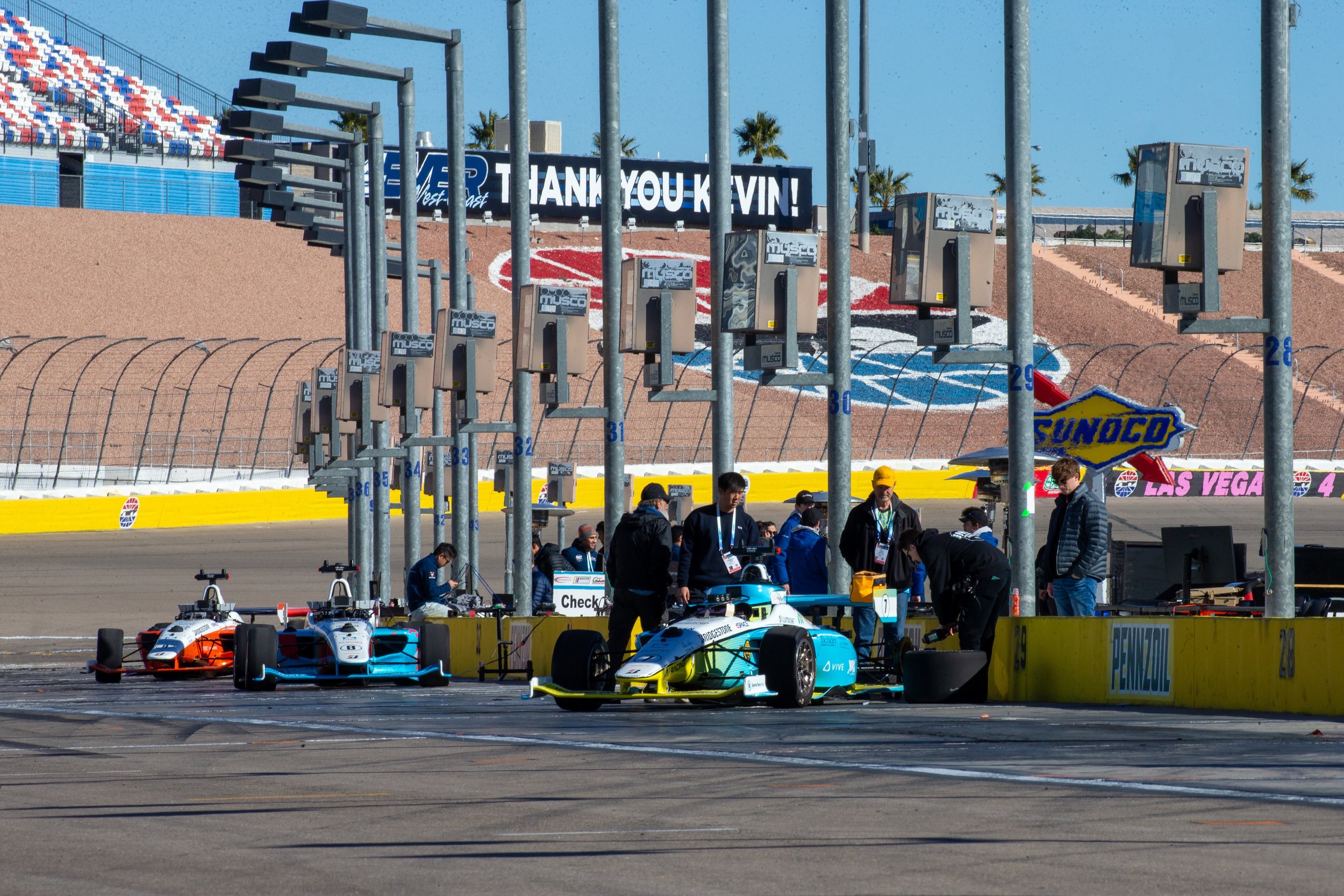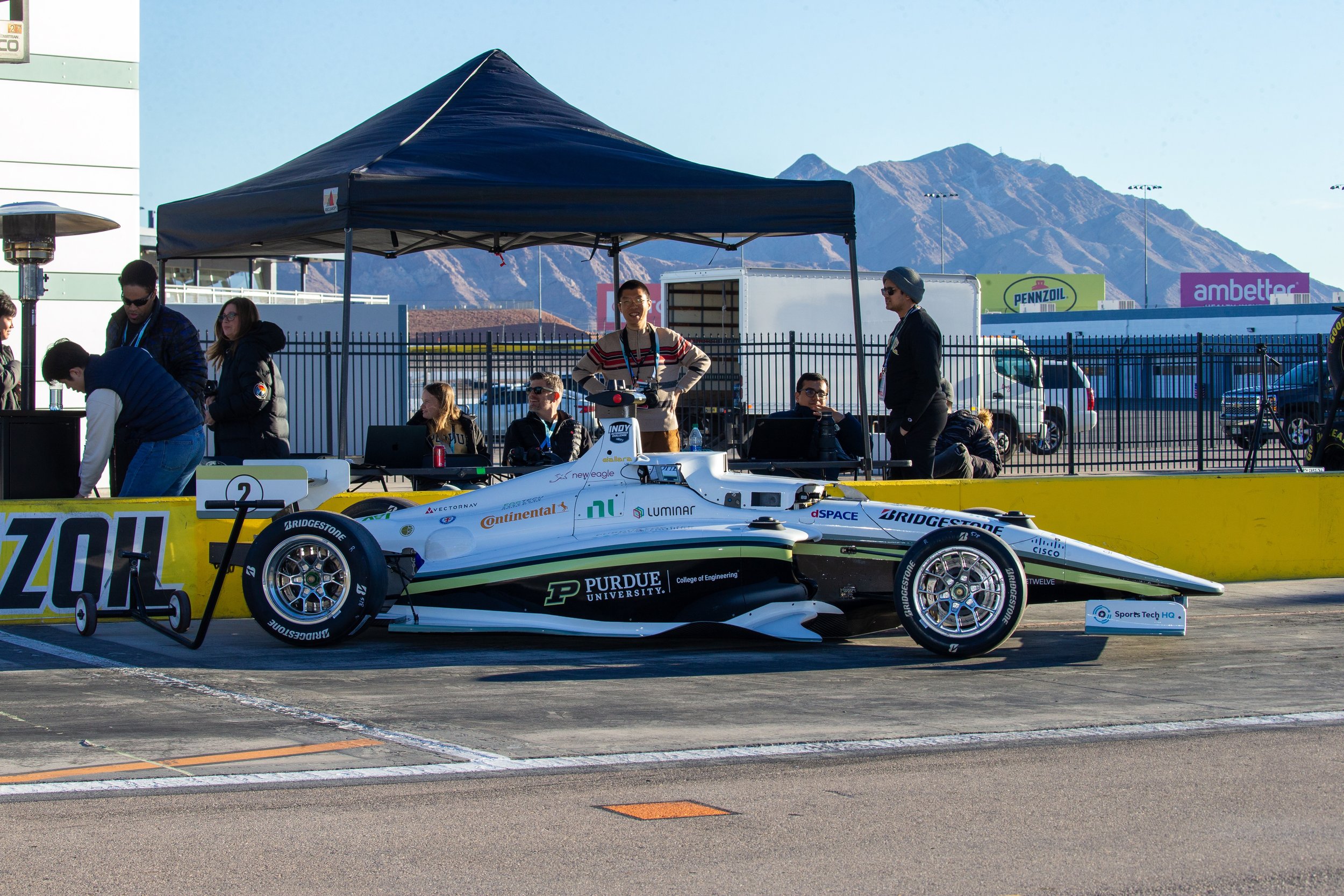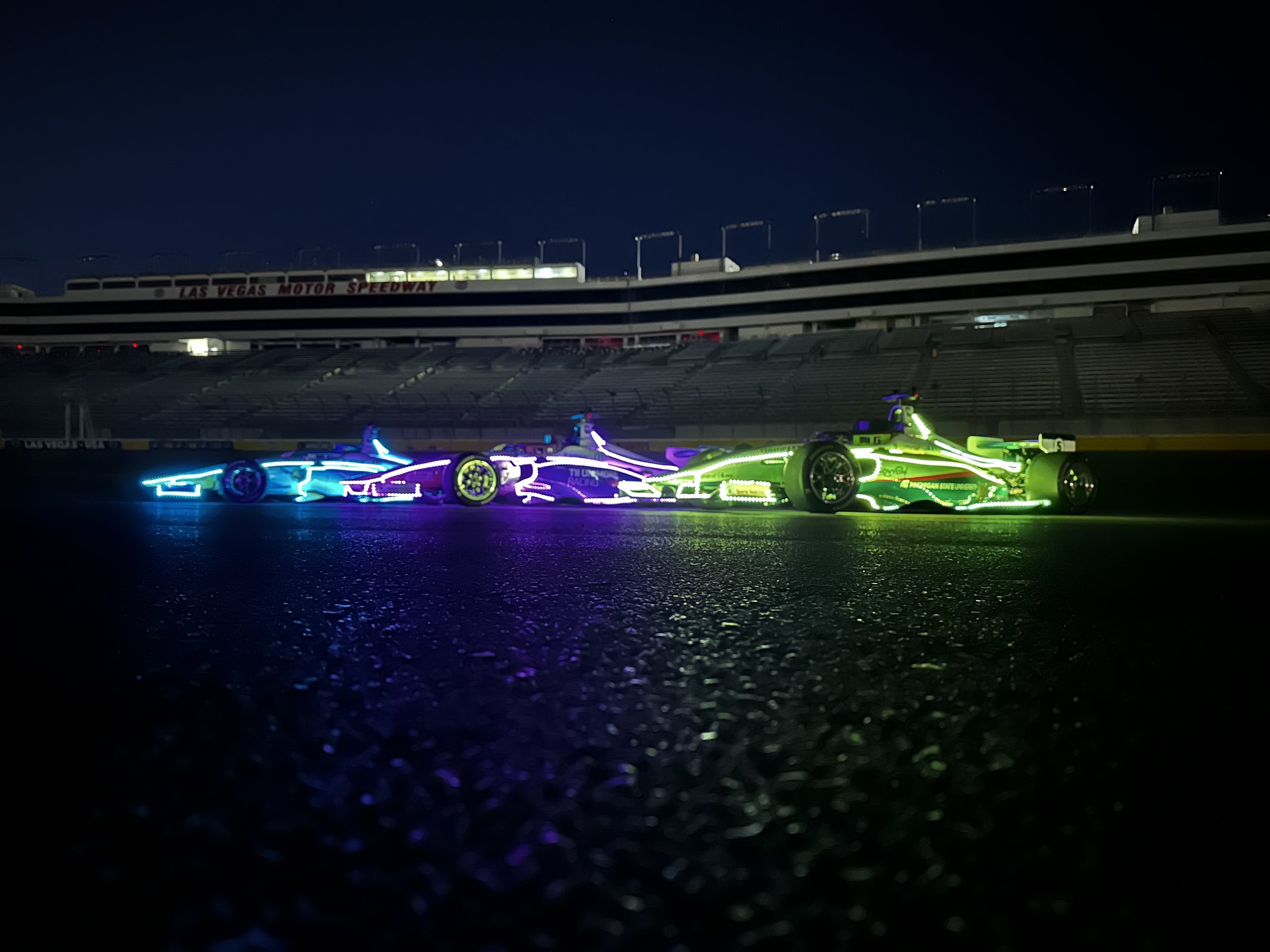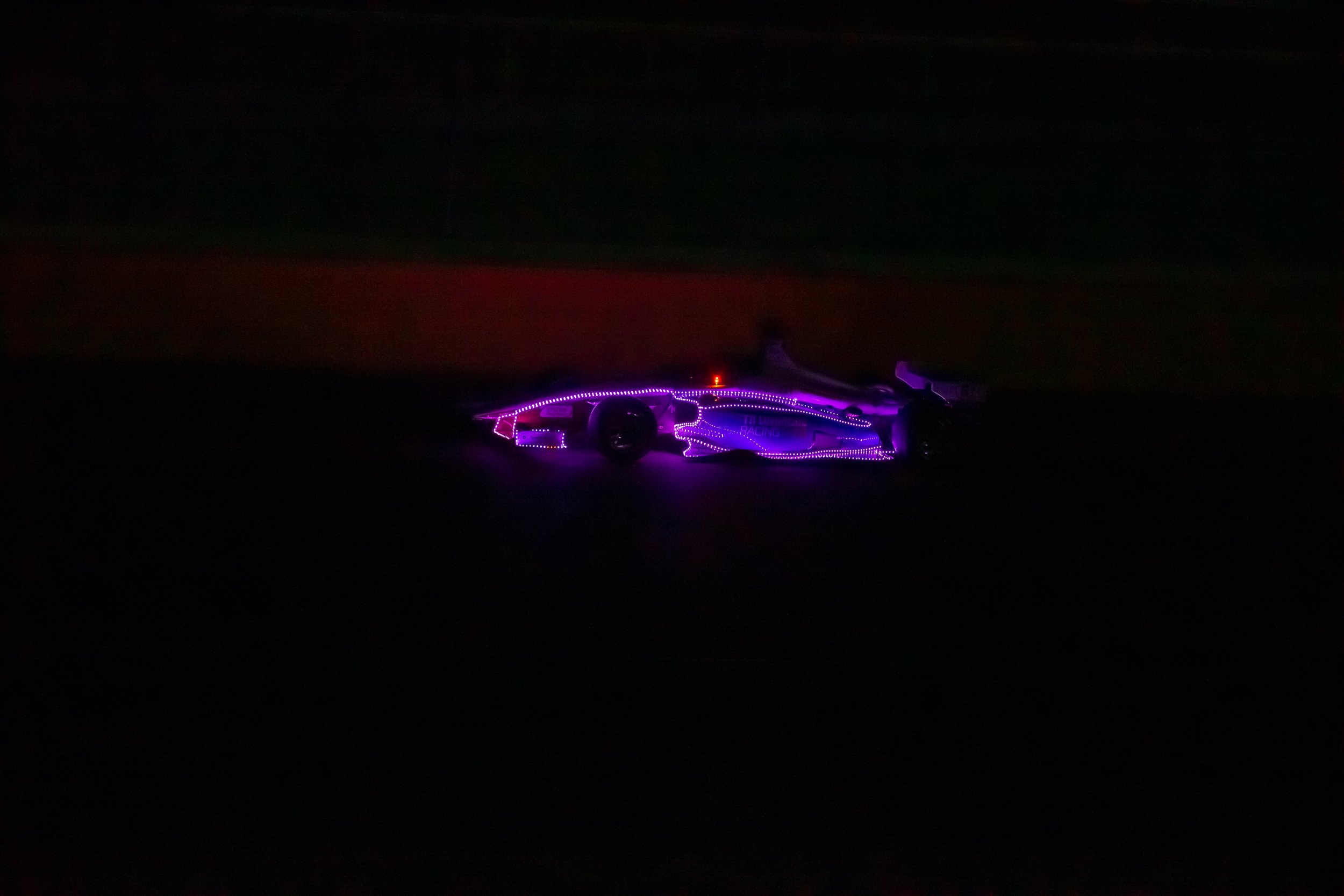CES 2024 Recap: Charting the Future of Autonomous Mobility – Announcements, Insights, and High-Speed Milestones
Unleashing the Future: IAC's Revolutionary Autonomous Breakthroughs
Launching a New Era with IAC AV-24
At CES®2024, the Indy Autonomous Challenge took a giant leap into the future with the unveiling of the IAC AV-24. This next-gen autonomous vehicle platform is not just a new model; it's a revolution in high-speed autonomous technology, designed to outperform and outsmart. The IAC AV-24 embodies a fusion of cutting-edge hardware and advanced software, setting a new standard in the realm of autonomous racing.
Engineering Marvels and Strategic Alliances:
We've partnered with the leading groups of the autonomous hardware and software industry to create the IAC AV-24. It's a culmination of innovative ideas and expert engineering from global leaders like dSPACE, Bridgestone, Cisco, Continental, and others. Each component, from the 360-degree LiDAR vision to the advanced radar perception has been meticulously crafted for superior performance.
Pioneering Races and Partnerships in 2024:
Looking ahead to 2024, we're excited to announce a series of events that will put the IAC AV-24 to the test. We're returning to the iconic Indianapolis Motor Speedway, venturing to the historic Monza F1 Circuit in Italy, and collaborating with the Goodwood Festival of Speed as an inaugural partner to their FOS Tech Initiative. These events are not just races; they're milestones in our journey to redefine high-speed autonomy.
The Pulse of Autonomy: Insights and Innovations from the CES Floor
Redefining Autonomy Beyond Traditional Applications
CES 2024 showcased a fascinating shift in the autonomous technology sector. While companies are increasingly venturing into realms like commercial vehicles, long-haul trucking, and off-road applications, it was evident that traditional robo-taxi applications are facing challenges, somewhat lagging in their expected progress. This scenario highlights the dynamism and evolving nature of the autonomous landscape. The Indy Autonomous Challenge, in contrast, stands as a testament to the unexplored potential and success in high-speed mobility, a domain where we are pioneering with remarkable outcomes.
CU-ICAR displays Deep Orange 14 at our booth. A purpose built vehicle for high speed off-road autonomy. Credit Indy Autonomous Challenge.
The IAC AV-24 displayed at CES 2024. Credit Indy Autonomous Challenge.
Leading the Charge in High-Speed Autonomous Innovation
The trends observed at CES 2024, particularly the shift towards enhanced safety and high-speed applications, resonate with our mission at the Indy Autonomous Challenge. However, our vision propels us further. Focusing on high-speed environments, we're not just adapting to the evolving landscape of autonomous technology; we're actively shaping it. By conquering the challenges of high-speed mobility, we're crafting solutions that promise to revolutionize highway travel, ensuring safety, efficiency, and a new paradigm in autonomous driving.
Panel Spotlight: Steering AI Drivers from Simulation to Reality
PANELISTS:
Mr. Paul Mitchell
President, Indy Autonomous Challenge (Moderator)
Dr. Alvaro Velasquez
Information Innovation Office Program Manager, Defense Advanced Research Projects Agency (DARPA)
Mr. Tino Schulze
Vice President Autonomous Driving & Software Solutions, dSPACE
Ms. C.K. Wolfe
Team Lead and Software Engineer, AI Racing Tech – University of California, Berkeley
Are We Ready to Trust AI with Lives at 100+ mph? — Our panel at CES 2024, featuring a lineup of visionary leaders, delved into the intricacies of AI driver training from simulation to reality. The discussion underscored the unique challenges and immense potential of high-speed autonomous driving.
A notable highlight was put forth on the importance of modeling and simulation in training autonomous systems, and the potential of low-fidelity simulations in accelerating the transfer of autonomy from simulated environments to real-world applications. This approach could revolutionize the way autonomy is learned and transferred, making it adaptable to dynamic environments and a variety of platforms.
“By modeling things too precisely, we run the risk of overfitting; we know from conventional machine learning that you need some degree of noise to generalize to unknown environments. ”
Key Takeaways
The panel focused on several critical aspects of AI driver training and the transition from simulation to real-world applications:
Developing AI Drivers for High-Speed Challenges: C.K. Wolfe discussed the intricacies of developing AI drivers for the IAC, emphasizing the pivotal role of simulation in this process.
DARPA's Perspective on Sim-to-Real Transfers: Dr. Alvaro Velasquez shared insights into DARPA's initiatives in sim-to-real environments and identified the key challenges in achieving seamless transitions across different domains of autonomous mobility.
dSPACE's Contribution and Commercial Implications: Tino Schulze highlighted the new partnership with IAC and the development of a high-fidelity digital twin simulation tool, explaining its significance for both IAC university teams and dSPACE’s commercial clients.
DARPA's Future Challenges for Autonomy: Alvaro Velasquez drew connections between DARPA's past challenges and the genesis of the commercial autonomous vehicle industry, speculating on the next grand challenges for autonomy.
Indy Autonomous Challenge @ CES 2024: Making History at the Las Vegas Motor Speedway
A Celebration of Team Efforts And Global STEM Talent
The Indy Autonomous Challenge at CES 2024 was not just a competition; it was a celebration of the extraordinary advancements in autonomous vehicle technology. Teams from around the globe, representing the brightest minds in engineering and technology, converged to showcase their prowess in high-speed autonomy.
This year’s event featured a diverse array of teams, each contributing to the evolving narrative of autonomous vehicle technology. Teams competing with the legacy IAC AV-21 racecars included Autonomous Tiger Racing from Auburn University, Black & Gold Autonomous Racing from Purdue University, Cavalier Autonomous Racing from the University of Virginia, KAIST (Korea Advanced Institute of Science and Technology) from South Korea, MIT-PITT-RW (a collaboration among Massachusetts Institute of Technology, University of Pittsburgh, Rochester Institute of Technology, and University of Waterloo), along with the winners, TUM Autonomous Motorsport from Technical University of Munich.
The teams faced more than just their competitors; they battled cold temperatures and gusty winds, factors that significantly impacted the performance of the vehicles. These tough weather conditions provided a real-world test of the resilience and adaptability of autonomous driving systems. The fact that the vehicles were able to perform at such high levels under these conditions is a testament to the advanced technology and meticulous preparation of all the teams involved.
Reaching maximum speeds of more than 150 mph despite cold weather affecting the tires and overall windy conditions. In a never seen before moment during the thrilling semifinal matchup, the TUM and KAIST teams raced side by side, two wide and wheel-to-wheel through turns one and two, getting as close 1.5 meters from each other. A first for high-speed autonomous racing.
Epic Showdown: TUM's Triumph and a Night of Firsts
The Autonomous Challenge @ CES 2024 was a display of resilience and technological prowess. TUM Autonomous Motorsport, representing the Technical University of Munich, emerged victorious, demonstrating exceptional skill and innovation.
Their triumph, achieved under the demanding conditions of cold weather and windy environments, set a new standard in high-speed autonomous racing.
This victory was even more remarkable given the challenging conditions, which tested the limits of each team’s autonomous technology.
Illuminating the Track: IAC AV-24's Stellar Night Demo
As the sun set, the Las Vegas Motor Speedway became the stage for another extraordinary event. Three IAC AV-24 racecars, AI Racing Tech, PoliMOVE-MSU, and TII UNIMORE Racing, showcasing the pinnacle of autonomous technology, took to the track under the lights and then, in a display of incredible sensory capability, continued to race in total darkness. This segment of the race underscored the versatility and advanced engineering of the autonomous vehicles, capable of navigating and competing in varying light conditions.
Celebrating the Teams' Determination and Skill
This year's event saw an impressive array of talent from universities across the globe. Each team, whether competing with the IAC AV-21 or demonstrating the IAC AV-24, showed remarkable ingenuity and commitment. Their ability to adapt to the demanding conditions of high-speed autonomous racing, especially under challenging weather, was commendable. Every team demonstrated the spirit of innovation and collaboration that is the hallmark of the Indy Autonomous Challenge.
The Autonomous Challenge @ CES 2024 was a showcase of the extraordinary. It wasn't just a demonstration of technological prowess; it was a celebration of innovation, collaboration, and the relentless pursuit of redefining the limits of high-speed autonomy. We leave CES 2024 inspired and excited for the future that we're driving towards – a future where autonomous technology transcends boundaries and reimagines possibilities.

